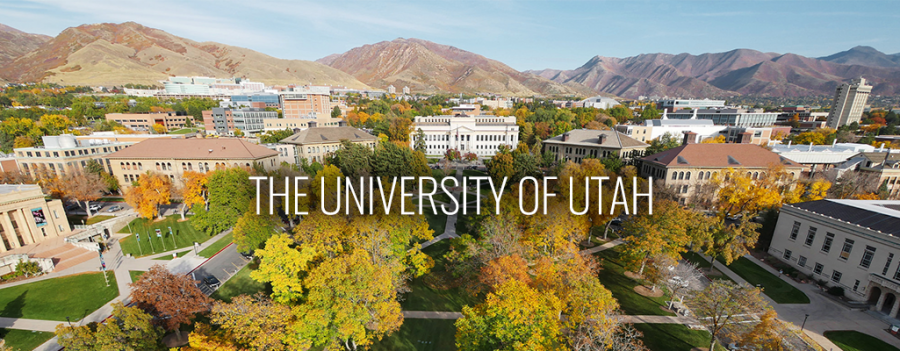#SafeU: Students Advocate for Changes in Campus Safety
August 29, 2019
“The loss of Lauren McCluskey and Mackenzie Lueck were tragedies that I believe have permanently changed this campus and our commitment to safety. My thoughts, and the thoughts of our student body, are with their family, friends, and loved ones as they continue to mourn their deaths,” said Student Body President Anna Barnes, speaking about the devastating tragedies the University of Utah has experienced over the last year. “Everyone on campus has drawn their attention to campus safety, and students are demanding results and progress on this issue — as they should.” These recent events have increased urgency on campus to pursue safety advancements throughout the U.
The U plans to invest almost $1 million in direct funds towards implementing new safety recommendations presented by the Presidential Task Force on Campus Safety, with an additional $6 million on safety expenditures provided by other campus entities over the next several years. This new pledge to safety includes various projects aimed at creating a more communal and committed effort towards protecting all students on campus.
President Ruth Watkins has showcased her commitment to student safety by hiring a chief safety officer, who will be in charge of coordinating and overseeing all safety initiatives on campus. Watkins has also accepted every safety recommendation proposed by the safety task force so far. These recommendations are in addition to the thirty campus-wide improvements that were made following an independent team’s review on campus safety in response to Lauren McCluskey’s case last year.
Other recommendations from the safety task force will also be implemented. Student parking will be available after 3 p.m. in lots adjacent to the Marriott Library, the Eccles Library and the Student Union. Evening classes will be clustered in quadrants, with corresponding alignment of campus transportation systems, courtesy escorts and campus security patrols. There are planned reforms of the emergency mass communication capabilities. Now, a new system will allow emergency messages to be communicated within buildings, including via desktop and landline telephone systems, and broadcast throughout campus grounds.
The U also plans to add a threat assessment team as an adjunct to the Behavioral Intervention Team, creating a two-team system capable of assessing both threats from outside and inside campus. The Office of Equal Opportunity and Affirmative Action will add an additional consultant, and the Office of the Dean of Student will hire an additional student contact case manager. In conjunction with Survivors of Assault Standing Strong, more self-defense training workshops will be offered on campus.
The Presidential Task Force on Campus Safety pulled from a wide variety of students in hopes of gaining a campus-wide perspective on safety needs. “The fact that the task force had representation from all areas of campus demonstrates that as a whole, we are engaged in making the entire campus as safe as possible,” said Dustin Banks, a task force member and Director of Support Services. “We believe the hard work by all members of the task force will enhance the safety of the campus, along with the culture of safety by all members of the campus community.”
The U has put a special focus on community throughout these safety initiatives, ensuring that students are not alone nor spread out across campus at night due to evening classes or events. “The ‘neighborhoods’ for evening classes, which will start to be implemented this fall, will help centralize evening classes and we believe there is safety in numbers,” said Michele Ballantyne, who works as an associate general counsel. “There will also be campus security patrolling the neighborhoods, coordinated transportation and increased evening student parking. We want students to be safe and to feel safe.”
“We think changes to the overnight guest policy in student housing, centralized evening classes, on-demand, shared rides, continued work on campus lighting and other recommendations will increase safety and feelings of safety,” Ballantyne said. “This will be a work-in-progress as we see how things are working together, but we wanted to implement this as quickly as possible, so we are beginning implementation this fall.”
Safe U Month, a presidential initiative endorsed by ASUU, will begin this October. Campus partners will coordinate in educating, training and providing resources to students, staff and faculty across campus on various safety procedures.
“Each week will focus on a different type of safety, whether it’s safety in relationships, mental and emotional safety, physical safety on campus [or other types of safety]. There will be different trainings, workshops and programs that will introduce students and staff to resources on campus regarding each different topic of safety,” Barnes explained. “We also hope to host an open forum where students can come learn about how ASUU has been fighting for campus safety and discuss what students want to see us advocate for moving forward.”
Safe U Month is an integral piece to the safety initiatives being implemented across campus. With proper education and training, students, staff and faculty will continue to heighten the awareness of these safety procedures while simultaneously improving campus safety practices as a whole.
For more information about the safety measures being implemented across campus, visit the Safe U website.
If you or anyone you know is in danger of any sort of violence, please visit the Safe U website for resources and support.
This article has been updated to change the name of “student task force” to “safety task force.” While students are part of the task force, the group is not made up of students alone. This article has also been updated to reflect the fact that Safe U Month is a presidential initiative. ASUU endorses Safe U Month, but is not initiating it.









Emily Norton • Sep 2, 2019 at 7:59 pm
Why don’t they just have online classes in place of night classes? That would be safer than having night classes in a restricted area.
UtesFan • Sep 2, 2019 at 3:38 pm
What has Anna done so far? It seems like last year Connor Morgan and Kaitlin McClean spent months on this, how has “ASUU been fighting” since then?